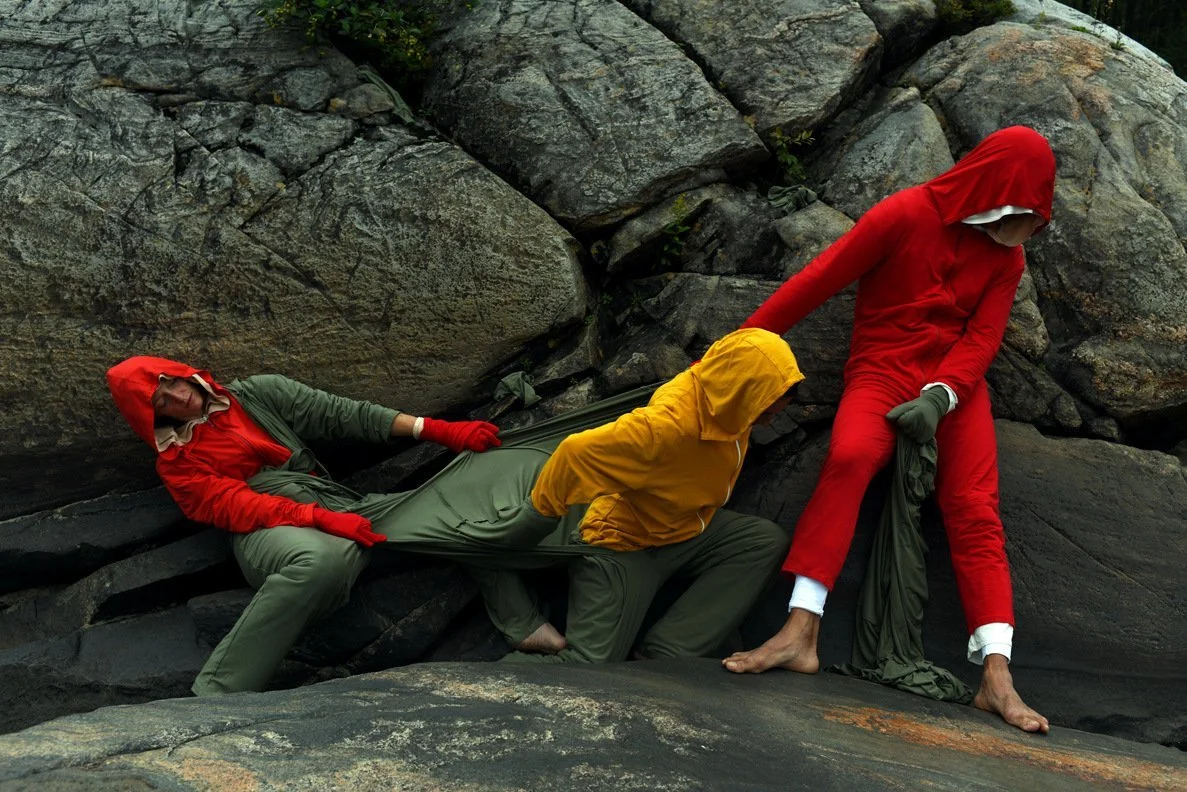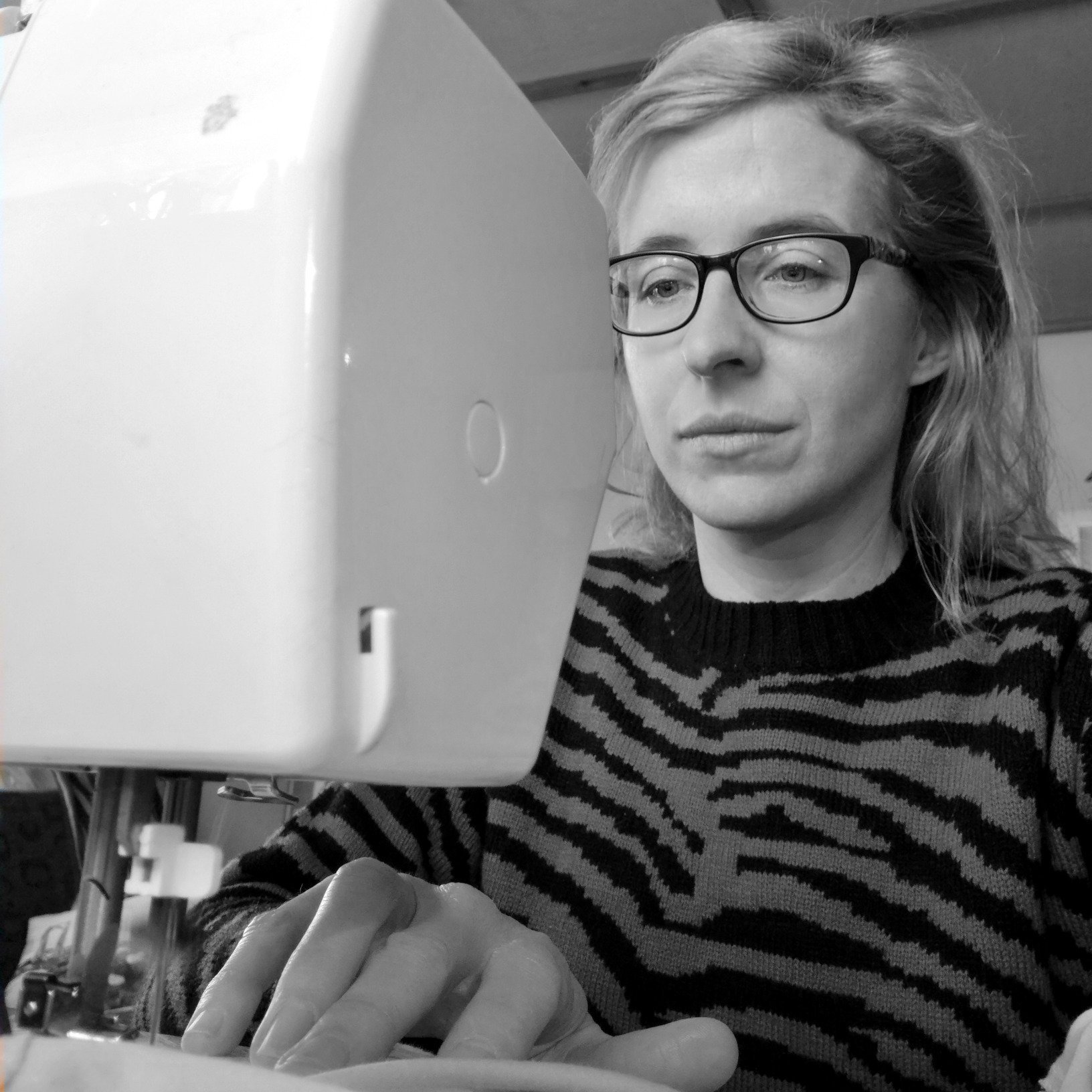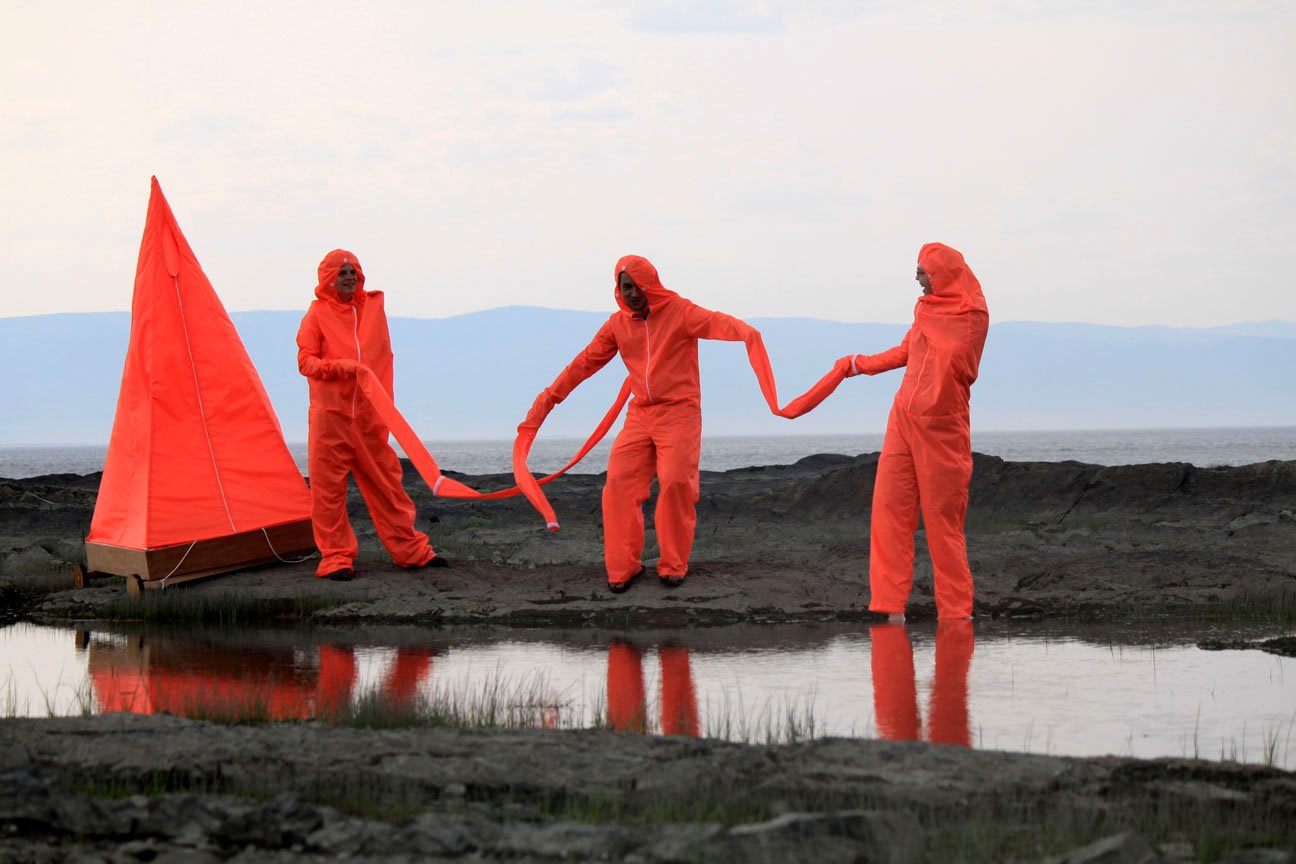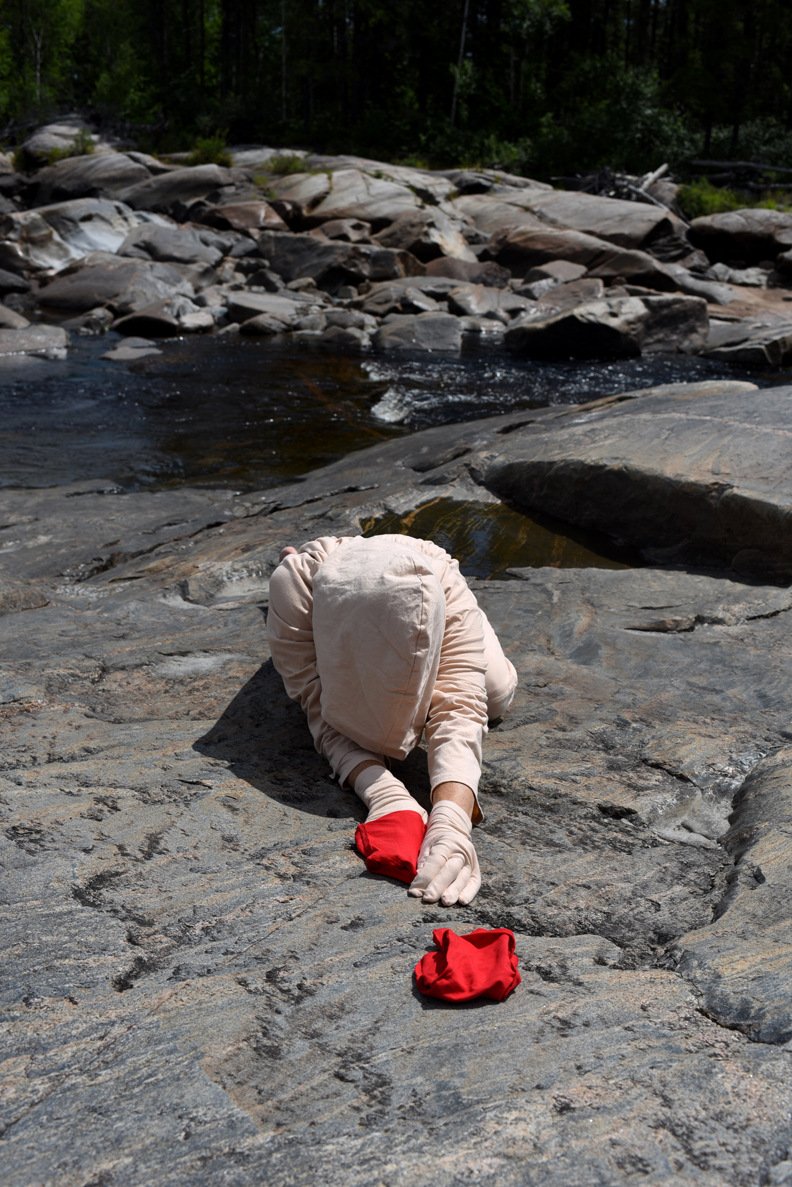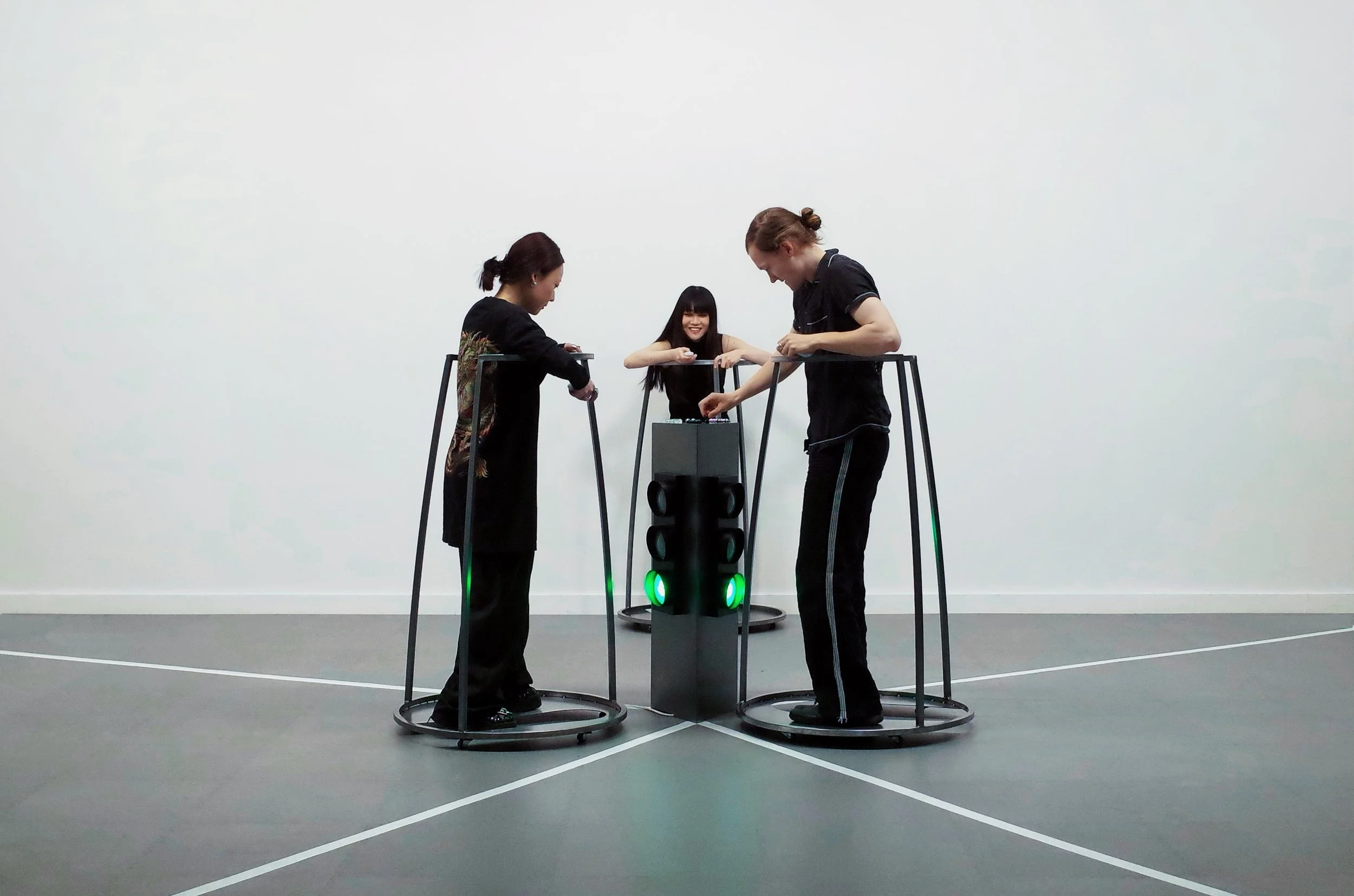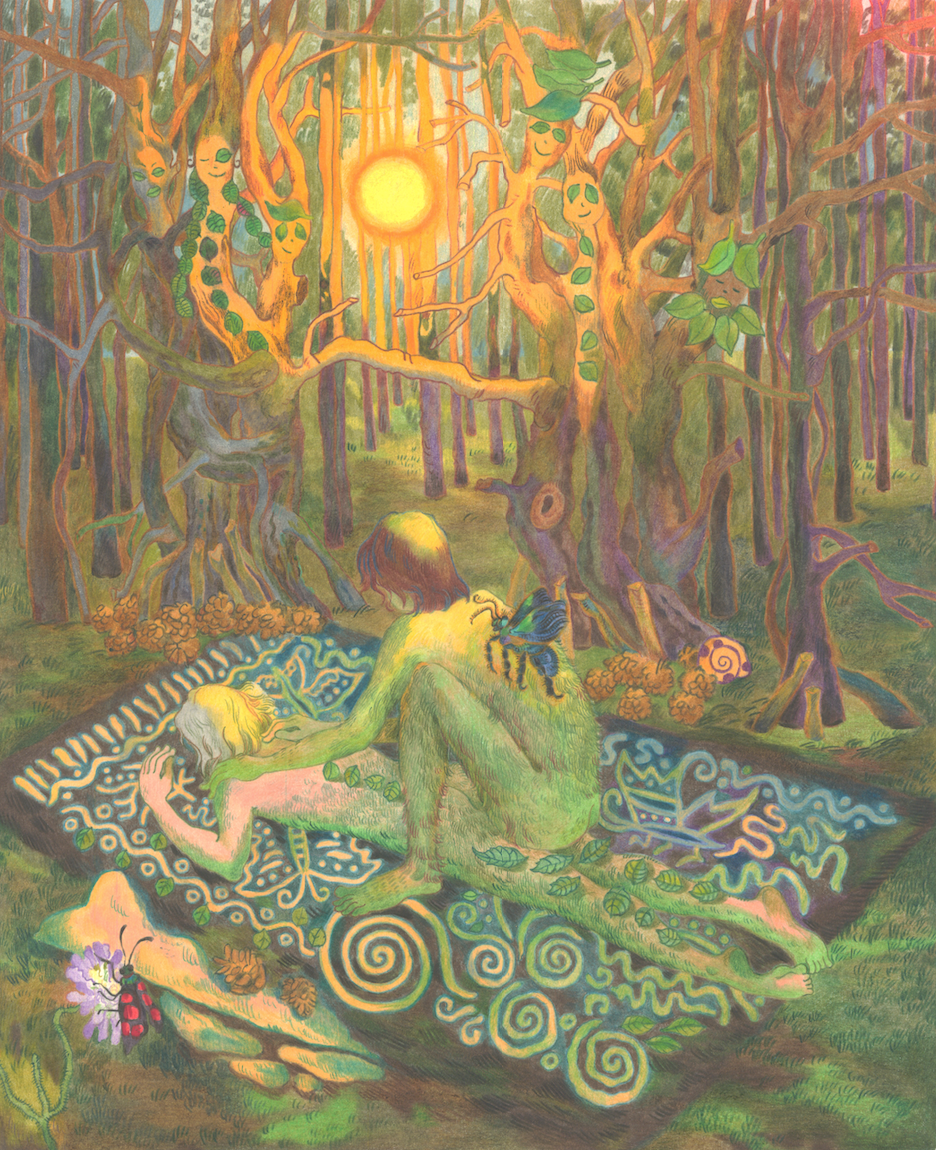10 Questions with Christine Comeau
Christine Comeau is a visual artist and cultural worker. Her practice is based on multidisciplinary installation, sculpture, and living poetry. Her research focuses on mobility, exile, constraint, and the physical and mental boundaries created by travel. Her work has been the subject of solo and group exhibitions in several art centers in Quebec, Canada, the United States, Germany, Sweden, and Brazil. Christine Comeau has also taken part in numerous creative residencies, including one that will take place at the Sagamie artist-run center in Alma in 2022. She holds an interdisciplinary master’s degree in art from Université Laval. She lives and works in Quebec City, Quebec, Canada.
Christine Comeau - Portrait
ARTIST STATEMENT
Since the beginning of her career, her creations have been rooted in an exploration of nomadism as a metaphor for a quest for personal and collective identity. To this end, she designs temporary shelters inspired by the tents of nomadic peoples who, rather than putting down roots in one place, choose to roam, invest and inhabit the territory. The tent translates the idea of a house, a refuge, but also a portable shelter that accompanies us on our travels. From then on, it becomes both the reassuring symbol of refuge and that of a shifting identity, forged by the time and space traveled. She also imagines and makes “relational clothes” into which two people must often slip. In doing so, they are encouraged to connect with each other, both physically and symbolically, in a relationship of intimacy, sharing, and negotiation. These clothes also become camouflage, blurring the external markers of the participants’ individual identities. It results from the performed installations, which induce an external as well as internal disorientation. Here again, the idea of a shifting identity is omnipresent.
Le Dépouillement de l’anguille, mixed media, 2021 © Christine Comeau
Get your limited edition copy now
INTERVIEW
Let's start with your background. How and when did you decide to become an artist?
It goes back to my high school years when I was taking art classes. I loved being creative. At 15, I was a bit naive, discovered the paintings and drawings of Salvador Dali, and wanted to become a surrealist painter. At 17, I was convinced that I would become a professional artist. I dreamed of traveling the world with my art without knowing what form it would take. Then, one day, while studying visual arts at university, I was introduced to creative residencies, and it was a revelation.
What is your personal background, and how did you develop into the artist you are today?
I come from a village called Saint-Gabriel de Brandon, in Lanaudière, a region of Quebec, a French-speaking province of Canada. I grew up near a lake, a founding landscape. I lived the first sixteen years of my life in this beautiful region. You will notice that the waterways come up often in my photographs. After that, I moved to a lot of cities and houses. Initially, I painted, drew, and collaged in a fairly naive style. After my first year of a bachelor's degree in visual arts at Laval University in Quebec City, I was in front of a blank canvas, and nothing came out. I could no longer paint. I knew at that moment that I had to change my artistic practice and mediums, so I started a completely different approach. I wanted to explore the theme of interconnection between beings and things, and it is through textiles and, more precisely, the creation of interconnectable tracksuits that it came to life. It must be said that I did all my post-high school studies in visual arts (college, bachelor's, and master's). I had the chance to explore different mediums, make decisive and inspiring encounters, visit museums and galleries, and deepen the subjects close to my heart. I've also had the chance to travel a lot since I don't stand still. I would say that the qualities that made me an artist are perseverance, curiosity, patience, resilience, determination, and a touch of self-mockery.
3000 ans d’errance, mixed media, 2011 © Christine Comeau
Halte nomade, mixed media, 2010 © Christine Comeau
As a multidisciplinary artist, how do you approach different mediums? Is there any difference in your practice and creative process when working with one medium over the other, or does your work stem from the same process despite the final medium and outcome?
The different mediums allow me to deepen my creation and explore new dimensions. Experimentation is at the heart of my creative process. I like the multitude, to live and make live experiences as much physical as psychological, and a multidisciplinary practice allows me to do so. I like immersive installations. Furthermore, I see the different mediums as tools to achieve my goals. I would say that my work stems from the same process despite the medium used and the final result.
In your work, both in the installations and wearable pieces, you greatly focus on the relationship between viewers and performers. Does your work borrow from relational art? And how does it influence your practice?
Indeed, my work borrows from relational art. In fact, I consider my work, among others, as relational art. It comes from a desire to provoke encounters that manifest themselves during my interventions. My clothing tents are conducive to exchange through play and experience. The random game takes shape during the performance. My works are a real social vehicle; they are works-vehicles by all the senses of the theme. Indeed, they are mobile vehicles that move and convey meetings, stagings, and performances. This circulation is set in motion each time I participate in a creative residency, an exhibition, or an event because, inevitably, an external intervention is planned at the end of my stays. The encounters multiply, transforming themselves at the rhythm of the exchanges. The participants are found among friends or fellow artists, or volunteers. To this end, the host structures that receive me launch a massive appeal to all their contacts. Interested people contact the person in charge of the association hosting the project. The meeting is mainly between the participants and me and between the former and the portable architectures whose codes they have to tame and appropriate the space.
Traveling is one of the main subjects of your work, and you use the trope of the tent to symbolize both the trip and the shelter or refuge needed when traveling. What messages would you like to convey with your work?
This desire to be constantly on the move and on a journey is born out of the fact that I have difficulty taking ownership of my mind and my body. This phenomenon is undoubtedly due to the domestication that the post-industrial capitalist society has instilled in me. Between this domestication and the education that our parents, the school system, and this society of overconsumption transmit to us, is there still a place for a certain well-being and a certain freedom? Traveling is, for me, an attempt to get closer to this freedom, even if it seems impossible to reach. Moreover, I have no home to live in. I don't feel at home anywhere, so since I have no home to leave or find, I continue my journey like a nomad. I often feel like a stranger in this world I live in. Traditions are not part of my North American culture. The question of identity, my identity, haunts me at times, but I consider myself, above all, a citizen of the world. I am attached to people but not to any specific place. Thus, displacement is an integral part of my artistic practice. Being elsewhere, settling precariously, inventing a new daily life somewhere else, strolling, getting lost in labyrinthine cities, waiting in non-places (i.e., train stations, airports, cafes), meeting people, having them participate in my parades or interventions, all these movements and gestures have a major importance in my existence but also intrinsically in my artistic approach.
In your statement, we read, "The tent translates the idea of a house, a refuge, but also a portable shelter that accompanies us on our travels. From then on, it becomes both the reassuring symbol of a refuge and that of a shifting identity, forged by the time and space traveled". How did you come up with this idea? Is it in any way related to your personal experience?
Indeed, this idea is very closely related to my personal experience. It was born from the fact that I have moved and traveled so often. The line between my personal and professional life does not exist, and the two are interrelated. Moreover, the intensive research and applications I do weekly to find host structures for my projects are the starting point of this process. Thus, the creation residencies have turned out to be the ideal formula for the realization of my projects but also of my being, of my random identity. To be elsewhere to reflect is essential in this process, to be always in movement, flee stagnation and inertia. Moreover, they allow me to take the time to develop my artistic career and, by the same token, to meet others while combining daily life and travel. In fact, it is the whole creative process and what it entails in reflections, gestures, movements, journeys, and encounters that are part of my daily life. Indeed, encounters take an important place in the elaboration of my itineraries. The notion of habitat sculptures, and more precisely of mobile artistic houses, has thus proven to be relevant in my journey as an uprooted person. Since there is no fixed and stable home to find, why not make one to bring with you?
Mutations, mixed media, 2014 © Christine Comeau
Shifting identities is another key concept in your art. Whether through the experience of traveling or by being forced to co-wear a piece of clothing with someone else, your work calls for a rethinking of ourselves. What is the end goal of this process? And what do you expect the viewers to receive from this process?
This phenomenon of appropriation of the suits and tents, mentioned above, is made by the adaptation of the body to a new constraining and limited space. Indeed, my portable architectures engage the person who puts them on to new behavior, characterized by trial and error and adaptation. By lending themselves to the game, the participants adopt other ways of being and integrate narratives that are formed and distorted little by little. The individual subjected to his new random identity temporarily belonging to a community of mutant strangers must learn to appropriate his second skin, this constraining envelope, this camouflage of true identity. The movements of the body differ enormously from those it is used to make instinctively. It must learn to inhabit the world differently. The participants exchange, among themselves, ways of cohabiting in these restricted spaces, which are the sculpture tents and suits. Since the bodies, linked by the system of ties or subjected to the transportation of a mobile tent (with only one arm, for example), move together, creating a choreographic game of movement, communication between the volunteers is essential. The meeting and the exchange are thus made between the participants. They are all part of a whole, of a work, of an event, of a start-up.
The performance requires a good organization since I must call upon several people and resources to make it happen. It is preferable that it take place in a busy street (a public place) in the city or village so that I can meet the passers-by. The performance brings people together because it connects the work to the participants and the participants to the public. It constitutes a public scene and invites to the meeting, to the social act. The public often comes into contact with the participants by creating dialogues by questioning them about the event. The extravagant character of the interventions invites the passer-by to position himself: will he let himself go to the meeting of this series of mobile houses and mutant creatures a little grotesque which move in front of him and thus come to upset his everyday life or will he continue his way, imperturbably? Perhaps he will be a little amused and surprised by the singularity of the thing?
Le Dépouillement de l’anguille, mixed media, 2021 © Christine Comeau
Le Dépouillement de l’anguille, mixed media, 2021 © Christine Comeau
Inevitably, meetings are created between the participants and some curious passers-by. Some of these curious people even follow the parade as if they wanted to participate. One of the objectives is to try to make the world see differently, to play in the imagination of others.
My will to be in the world, materialize my ideas and impose them is stronger than anything. I share the whims of my imagination with the others of my kind. This will make me leave my comfort zone and shyness, camouflaged in a suit/shell/second skin, to go towards the other, to open myself to the other. Whether this other is the participant or the passer-by, my invitation is the same: I invite them to discover my world and help me discover their own through the exchange of dialogues and perspectives. This desire for encounters, to know this world and its inhabitants, is stronger than my desire to escape. Traveling is a tactic to provoke these encounters that feed my projects.
My projects have always been developed with the same objective: bringing people together to live a unique experience through play exchange, constrained movement, and astonishment.
Your art strongly needs the presence of the public or the performers, but over the past couple of years, we have seen an increasing shift toward the digital art world. Do you plan to adapt your art to this new environment, like the Metaverse, for example?
Good question. I'm thinking about it, but I'm not sure yet what my artistic future will be.
Let's talk about your future projects. What are you working on right now? Do you have any new projects or series you would like to tell us about?
At the moment, I am thinking about a future project. After more than fifteen years of surfing on the same themes, I feel like I've reached the end of a cycle. So I have to get back on track. I am currently looking for venues to present an installation on my latest project, Le dépouillement de l'anguille, which I have been working on for the past two years and for which I received a Canada Council for the Arts creation research grant. It is a multidisciplinary project that combines choreography, textile art, photography, and video. Last year, my team and I camped for a week in the northern wilderness of Lac St-Jean to create a series of choreographic performances with three professional dancers. More precisely, the choreographies are a series of performances, a sort of living tableaux in which the professional dancers wear "sweat-suits", which I made in order to experiment with the notions of border, territory, landscape, and identity. I wanted to articulate a reflection on "nature as an opening to the world" and that, from these artistic explorations, a desire for discovery and freedom, as well as a heightened awareness of our human scale in relation to trees, rocks, and other elements of the natural landscape, would emerge. These site-specific performances took the form of wild choreographies in which the performers appropriated the landscape. Micro-events performed in places without spectators, these performances left no tangible trace behind, except for a series of photographs and a video.
And lastly, any upcoming exhibition or publication where our readers can find your work?
I am currently working on a publication related to the project Le dépouillement de l'anguille. I started the process (it is almost finished) in a micro-edition residency at the Sagamie Art Center, in Alma, Quebec, from June 6 to 10, 2022. You can see the video and some images of the project on my website.

